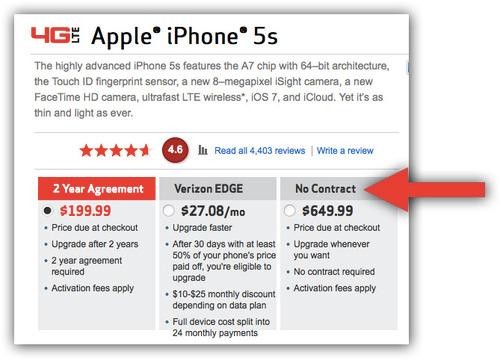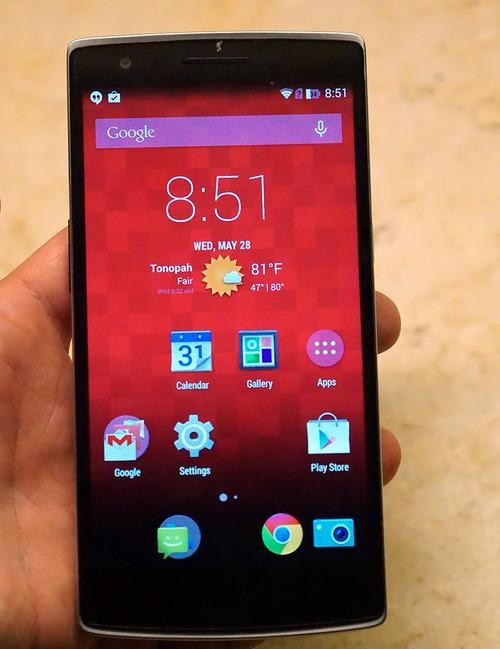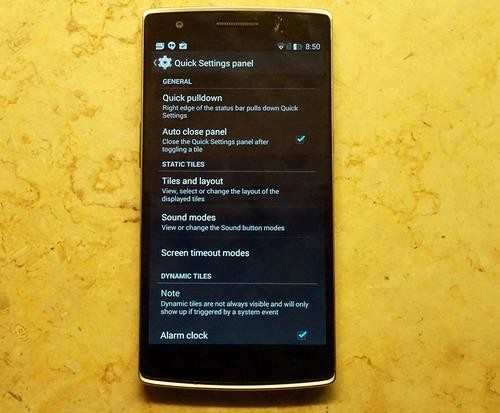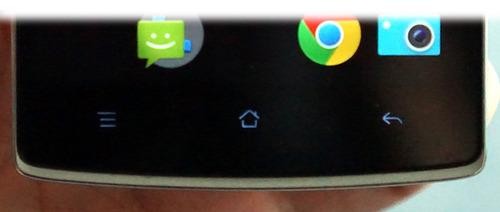Don’t look now, but the smartphone may finally be fully baked.
Smartphones as a category are reaching maturity. Every new iPhone and every new Samsung phone comes out with only minor tweaks.
And maybe that’s OK. Nobody complains about the lack of innovation in desktop PCs, right? Or GPS units. Or flashlights. They are what they are. They’ve fulfilled their destiny. There are no more radical improvements to be discovered.
Well, maybe not in shape, size, or features. But there are certainly other aspects of smartphones that are ripe for radical rethinking, and a Chinese startup called OnePlus has just found one: price.
You don’t actually think that your $200 iPhone or Samsung Galaxy phone really costs the $200 you paid for it up front, do you? Its actual price is about $650. That’s why you can’t get the $200 price without agreeing to a two-year contract. The remaining $450 is hidden in your monthly bills for the two years. (Theoretically, your phone carrier should make your monthly bill smaller once you’ve fully repaid the $650. It doesn’t, unless it’s T-Mobile. But that’s another rant.)
How can you confirm that I’m right? Because most carriers also offer you today’s top smartphones without a two-year commitment. Price for one of these “off-contract” phones? $650.

Which brings us to this new phone, the goofily named OnePlus One. (Why not just call it the Two?)
It’s a gorgeous, sleek, high-luster, superfast Android phone, easily a rival for the popular Samsung Galaxy S5 (review) or the HTC One (M8) (review).

The OnePlus One
But there’s one big difference: You buy this phone outright from the maker for $300. That’s less than half the price of those other high-end Android phones.
That’s for the model with 16 gigabytes of storage. You can quadruple that amount — to 64 gigabytes — for only $50 more, which is another extraordinary deal.
The phoneThe look and feel of this thing are exactly what you’d expect of its high-end category, and not its low price. At 5.5 inches, the screen is huge. Too big to operate with one hand, if you ask me (and I am large of hand), just like those other giant top-of-the-line phones.
The One is very thin, though; its gracefully curved back is about a third of an inch at its thickest point, a fifth of an inch at its tapered edges. The back (my test unit was white) is plastic but classy, polished like a worry stone.

The company says a wide variety of swappable back panels will be available (“including kevlar, bamboo and denim on top of standard silk and sandstone”).

Which is cool, except that getting the back panel off is like doing neurosurgery wearing oven mitts. Don’t think you’re going to go popping on a different back to go with the vibe of each party you attend.
“But in that case,” you may ask, “how am I supposed to swap out the battery?” Well, you can’t. The battery is permanently installed, like an iPhone’s.
And while we’re on the topic of lowered expectations: There’s no way to expand the storage, either. There’s no memory-card slot, as there is on the Samsung or the HTC One (M8). Good thing the 64-gig model is so cheap!
Those shortcomings may be a deal-killer for you; if so, off you go to the $650 phone aisle.
If not, the rest of the news is mostly good. The screen looks great: bright, sharp (400 pixels per inch), vivid, excellent viewing angles. The audio sounds terrific. The speed is top-notch. The battery is the usual: a full day of charge, maybe two if you don’t use it much.
The camera is a slight disappointment. It’s 13 megapixels. Not that that means anything, since it’s 13 megapixels of washed-out colors:

There are lots of filters and editing tools, though. And two flashes, white and amber, designed to match your subjects’ skin tones better (as on the iPhone 5s). And you can record beautiful slow-motion video.
Alas, there’s no hardware image stabilizer, but a software stabilization feature helps somewhat.
The softwareThis is kind of wild.
Google’s Android software is famous for being modifiable. Google lets phone makers, or even you, add to, subtract from, or change the standard Android software in any way. It’s turned out to be a blessing and a curse: lots more flexibility and variety, but also less standardization. Getting to know one Android phone doesn’t mean you’ll instantly know your way around another.
In any case, many Android fans have heard of CyanogenMod. It’s an open-source, spin-off Android operating system, popular among techies because it offers many more customization options than standard Android (or “standroid,” as nobody but me calls it).
For example, according to Wikipedia, Cyanogen offers “native theming support, FLAC audio codec support, a large Access Point Name list, an OpenVPN client, Privacy Guard (a per-application permission management app), support for tethering over common interfaces, CPU overclocking and other performance enhancements, soft buttons and other ‘tablet tweaks,’ toggles in the notification pull-down (such as Wi-Fi, Bluetooth and GPS), as well as other interface enhancements.”
Well, OK then.
In English? CyanogenMod offers a lot more customizability.

So here’s the news: The OnePlus One comes with Cyanogen as its operating system out of the box. It’s not something you have to install; it’s beautifully integrated right into the system.
Cyanogen makes possible a lot more options and some very cool new features:
• You can adjust the brightness of the OnePlus by running your finger left or right along the top of the screen. Super fast and easy.
• You can trigger certain functions even when the phone is dark and asleep. For example, you can draw an O on the darkened screen to fire up the camera. Or — how’s this for the idea of the year? — you can draw a V on the darkened screen to turn on the LED flashlight on the back. The phone never even turns on. That is incredibly useful.
• You can double-tap the screen to put the phone to sleep — or to wake it up.
• You can add a percentage readout to the battery gauge.
• There’s a Themes Store that lets you download entirely new looks (color, layout, wallpaper, and typography schemes) for your phone.
• You control which icons appear on the lock screen.
• Text messages are automatically encrypted, so no NSA snoopers will ever know what you’re saying. (Unfortunately, that feature kicks in only when you’re sending texts to another Cyanogen-equipped phone.)
• You can issue Siri-like commands to the phone even when it’s asleep. Without touching it. It’s always listening for you to say, “OK, OnePlus,” at which point it chimes and starts listening for commands. You can say all the usual things: “What time is it?” “What’s the weather tomorrow?” “Call Cheryl’s cellphone.” “Give me directions to the Brooklyn Bridge.” And so on. (Hat-tip to Google/Motorola for pioneering this feature.)
On the other hand, you don’t have to change anything at all, and you don’t have to exploit any of these features. They’re lying in wait if you change your mind.
And you can still load and run all the existing Android smartphone apps from Google’s Play store.
Thumbs-up for CyanogenMod.
ButtonsThere’s something weird going on with the buttons on the OnePlus One.
On most Android phones these days, you get three buttons below the screen: a Back button, a Home button, and a Recent Apps button, like this:

On this phone, though, the dimly illuminated touch buttons below the screen are Menu, Home, and Back.

In other words, not only are they the wrong buttons, but they’re out of order!
The Menu button isn’t common anymore; most apps offer their own built-in Menu buttons. So these days, most phones come with a Recent Apps button in its place. (On this phone, you can double-tap the Home button to see the app switcher.)
This is a job for … CyanogenMod! Thanks to this special software, you can pop into Settings and disable those three glass touch buttons — and replace them with onscreen Android buttons. This time, the sequence and nature of the buttons is entirely up to you.
The only downside is, of course, that you’re sacrificing a half-inch of screen space to them — and now there’s this weird dark empty space below them.

AvailabilitySound good so far? Well, here’s the awkward part: You can’t just go out and buy the OnePlus One.
It’s not available from Verizon, AT&T, T-Mobile, Sprint, or any other carrier. (Cutting out the carrier is one way OnePlus has kept the price down.) Instead, you have to buy it directly from the company’s website.
But even that’s going to be tough, because right now the phone is available by invitation only. (Invitations can come from the company or via other people who have a OnePlus phone.) Maybe it’s because they’re just ramping up manufacturing and don’t have many to sell. Maybe it’s because they want to create an atmosphere of exclusivity and rarity to this phone. Either way, it’s a drag.
Once you do get the phone, by the way, you still don’t have phone service. You have to buy a SIM card (the tiny card that gives your phone its phone number and account information) yourself, from AT&T or T-Mobile. (This is a GSM phone, so those are the only U.S. networks it can use.)

Wait for itThe OnePlus One phone beats the pants off its most obvious rival in terms of price, the Google Nexus 5. And with that $300 price and infinitely customizable software, it breathes down the necks of the expensive Samsung and HTC phones.
So, yeah, maybe there aren’t many more big-ticket items left to become standard elements of the modern smartphone. But cutting the price in half is an awfully attractive consolation prize. LINK


